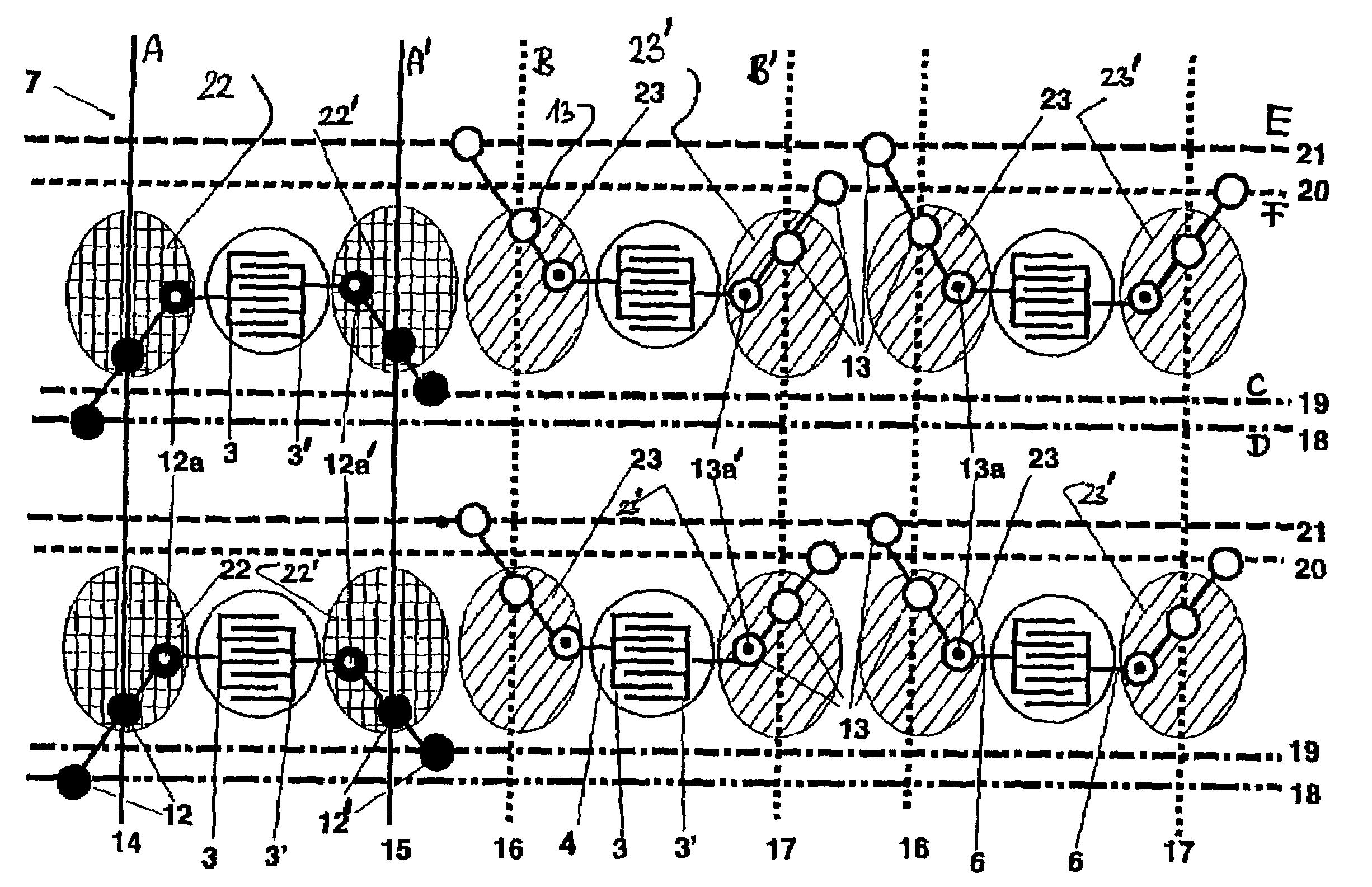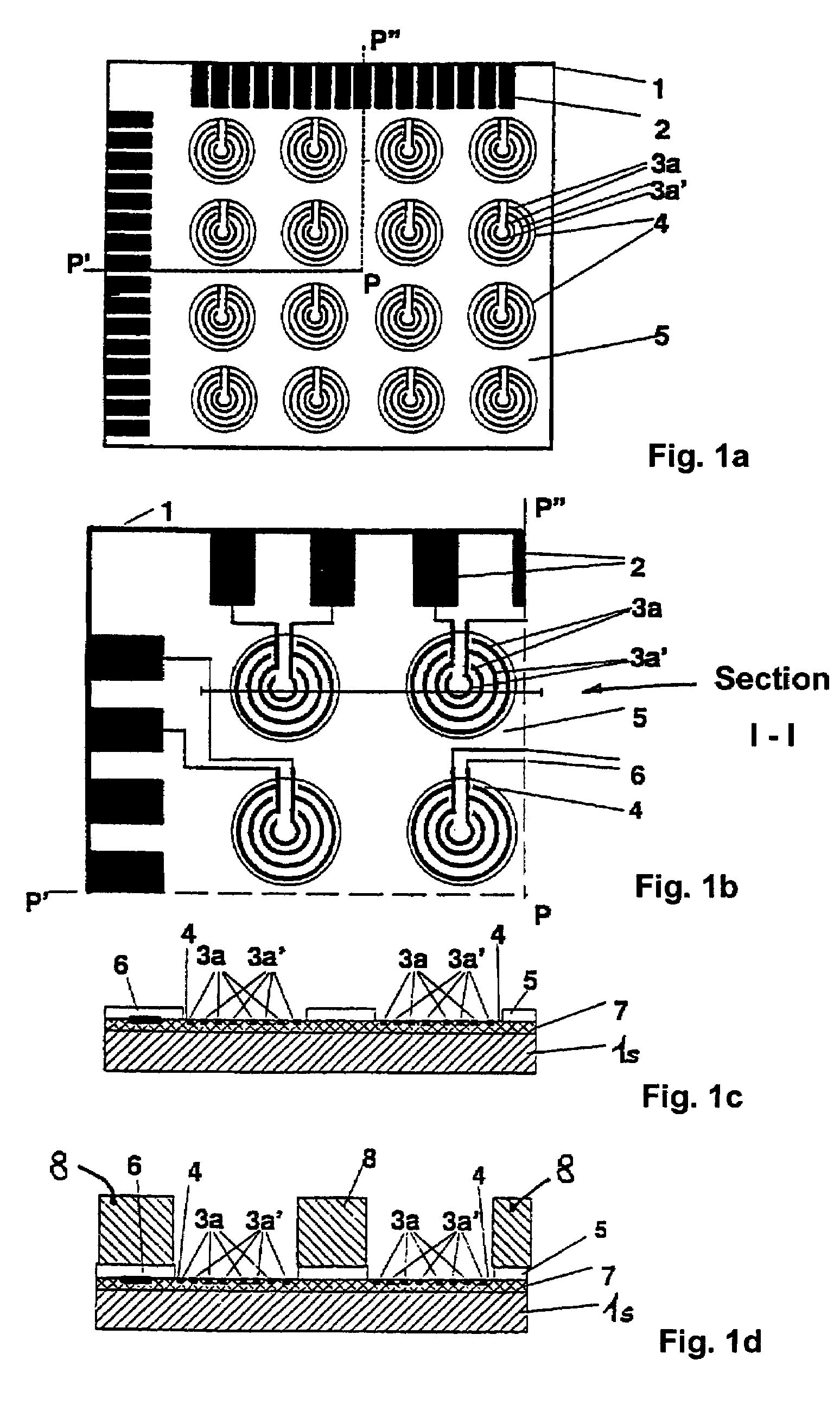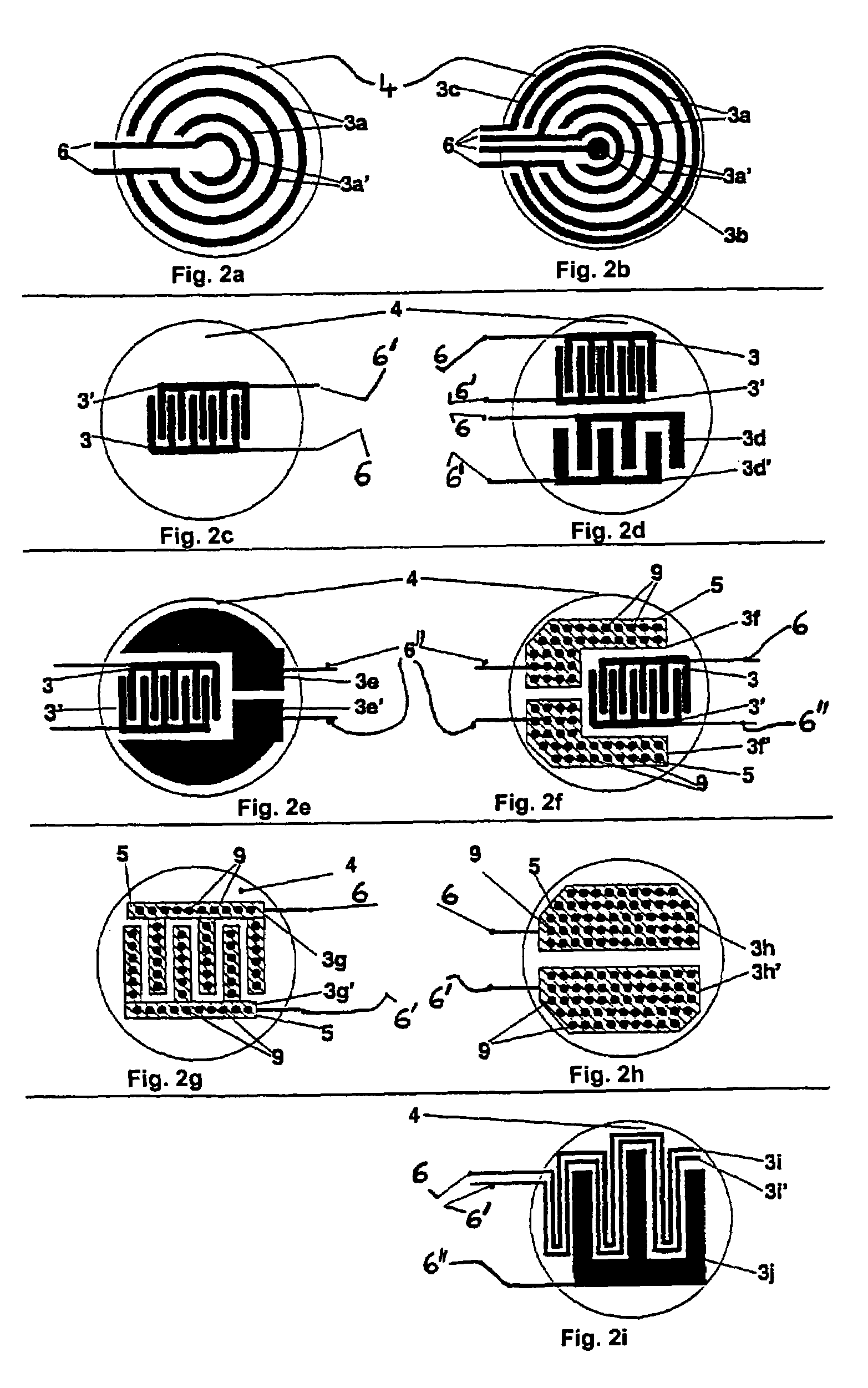Sensor arrangement with electrically controllable arrays
a sensor array and array technology, applied in the field of electrical controllable arrays of sensors, can solve the problems of inability to read out prior described electrode arrays by serial methods usual in computer technology, and the actual sensoric function has to be taken over by additional optical components, so as to avoid interference in polarization and eliminate undesired binding events
- Summary
- Abstract
- Description
- Claims
- Application Information
AI Technical Summary
Benefits of technology
Problems solved by technology
Method used
Image
Examples
embodiments
EXAMPLE 1
Production of an Electric Sensor Array with Direct Output Contact in Silicon Technology
[0158]Microelectrode structures according to FIGS. 1 and 2a are produced by standard silicon technology, compare Reimer et al., Sensors and Actuators, A 46 / 47(1995) 66. A thermal oxide of a thickness of 500 nm is produced on 4″ silicon wafers. On said oxide, a photo resist is photolithographically structured such that the contours of the electrodes are uncovered for the electrode structures. An ultramicroelectrode system of concentric rings according to FIG. 2a comprises annular electrode strips having a width of 1.5 μm and an ring distance of 800 nm. The rings are alternately connected with the contacts according to FIG. 2a via conducting paths 6. 16 sensor positions are arranged on the sensor array in a 4×4 matrix with array positions of a diameter of 300 μm. 2×16 output contacts are arranged on two adjacent sides of a silicon chip having a size of 1×1 cm. The distances of the sensor ar...
example 2
Production of an Electric Sensor Array with a Direct Contacting on Glass
[0160]Interdigital electrode arrays according to FIG. 2e, having 9 sensor positions are structured in a 3×3 matrix on 4″-Pyrex-glass-wafers by a photolithography according to example 1. Unlike example 1, an adhesive chromium layer of a thickness of 20 nm, followed by a platinum layer of a thickness of 150 nm are evaporated onto the glass and finally structured by a lift-off method according to example 1. As an adhesion agent for the subsequent insulating layer, a 3% solution of alkyloxysilane in acetone is brought into contact with the surface. After centrifuging a polyimide layer of a thickness of 10 μm thereupon, the sensor array positions, which have a size of 400 μm and are positioned at a distance of 500 μm with respect to each other, are structured by a standard photolithography such that the contact surfaces and the sensor positions are uncovered. An interdigital electrode system with auxiliary electrodes...
example 3
Production of an Electric Sensor Array System with CMOS Switches
[0161]A switch plane is produced by a CMOS standard method, compare Widmann, Mader, Friedrich, Technologie hochintegrierter Schaltungen, Springer Verlag Berlin 1996, in a process with 1 μm minimum structures. Crossings of conducting paths required according to FIG. 3 are realized by crossovers 32 of polysilicon paths 31a and aluminum paths 27. A higher electric resistance is not of importance due to small sensor currents. In the CMOS method used, switches 12, 12′ and 13, 13′ are advantageously adapted as transmission gates. A transmission gate connects the points 12a, 12a′ with line 18 and 19, and the points 13a, 13a′ with bias line 21 and 20. Addressing lines 14, 15, 16, 17 comprise a pair of conducting paths extending in parallel, at which signals of a complementary polarity are supplied to the gates of the two transistors of a transmission gate. Alternatively, an on-chip inverter may produce two complementary signals...
PUM
| Property | Measurement | Unit |
|---|---|---|
| structural width | aaaaa | aaaaa |
| width | aaaaa | aaaaa |
| diameter | aaaaa | aaaaa |
Abstract
Description
Claims
Application Information
 Login to View More
Login to View More - R&D
- Intellectual Property
- Life Sciences
- Materials
- Tech Scout
- Unparalleled Data Quality
- Higher Quality Content
- 60% Fewer Hallucinations
Browse by: Latest US Patents, China's latest patents, Technical Efficacy Thesaurus, Application Domain, Technology Topic, Popular Technical Reports.
© 2025 PatSnap. All rights reserved.Legal|Privacy policy|Modern Slavery Act Transparency Statement|Sitemap|About US| Contact US: help@patsnap.com



